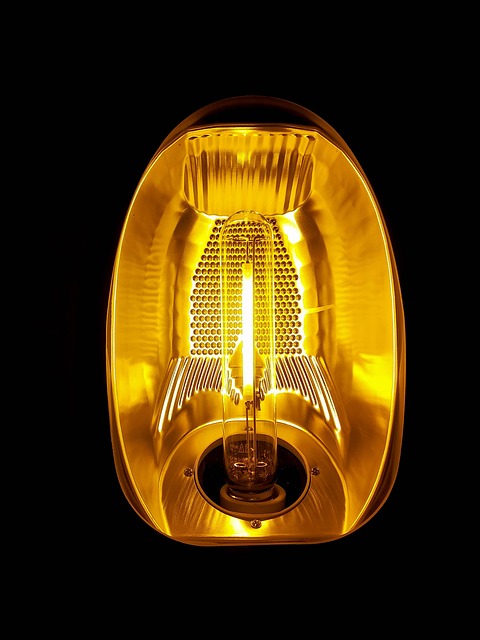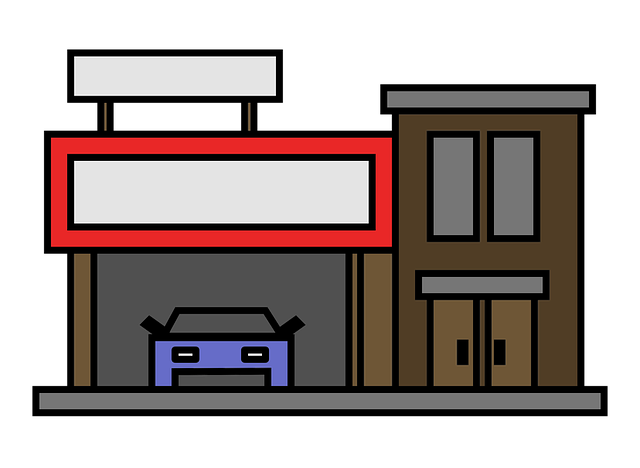Mercedes Night Vision Calibration: Post-Repair Safety Assurance
Mercedes Night Vision technology enhances driver safety in low light by detecting and illuminating o…….
Welcome to an in-depth exploration of a technology that is transforming nighttime driving: Mercedes Night Vision Calibration. This cutting-edge system represents a significant leap forward in automotive safety, offering drivers enhanced visibility and control during low-light conditions. In this comprehensive article, we will navigate through various facets of this innovative feature, from its technical intricacies to its global impact and future potential. By the end, readers will gain a profound understanding of why Mercedes night vision calibration is not just a luxury but an essential consideration for automotive manufacturers worldwide.
Definition: Mercedes Night Vision Calibration (NVC) is an advanced driver-assistance system (ADAS) designed to improve safety and driving experience in nighttime conditions. It combines high-resolution cameras, infrared technology, and sophisticated software algorithms to deliver a clear, detailed view of the road ahead, even in complete darkness.
Core Components:
Infrared Camera System: This is the heart of NVC. High-powered infrared cameras capture heat signatures, allowing them to “see” through the dark. They identify objects like pedestrians, animals, and vehicles, enhancing their contrast against the road surface.
Image Processing Software: Advanced algorithms process the infrared images in real time. They filter out noise, enhance specific features, and create a clear, monochrome view of the surroundings. This software also tracks moving objects, ensuring accurate detection even at high speeds.
Headlight Integration: NVC is seamlessly integrated with Mercedes’ adaptive headlights. The system dynamically adjusts headlight beam patterns based on detected obstacles, ensuring optimal illumination without blinding other drivers.
Display and User Interface: Calibrated night vision images are displayed on the vehicle’s center console or heads-up display (HUD). A user-friendly interface allows drivers to toggle between regular camera view and NVC, providing a clear hierarchy of information.
Historical Context: The concept of night vision technology in automobiles dates back several decades. Early attempts involved using visible light cameras with enhanced lighting. However, these systems struggled with low-light performance and required complex filtering mechanisms. Mercedes’ NVC represents a significant breakthrough, leveraging infrared technology to deliver superior nighttime visibility without compromising driver comfort or safety.
Mercedes Night Vision Calibration has made a profound impact since its introduction, sparking global interest and adoption rates that are both rapid and widespread. Its influence can be seen across various regions, each with unique regulatory environments and cultural driving habits.
Europe: The European Union’s stringent safety regulations have been instrumental in promoting NVC adoption. Countries like Germany and the Netherlands have led the way, with Mercedes and other luxury car manufacturers integrating this feature as standard or available option on premium models.
North America: In the US, state laws vary regarding night vision technology requirements. However, California’s Advanced Safety Technologies program encourages the integration of NVC and similar systems. Major automakers like Ford and General Motors have responded by introducing enhanced nighttime driving aids in their vehicles.
Asia Pacific: This region, including countries like Japan and South Korea, has witnessed a surge in NVC adoption due to its high density of urban areas and complex traffic patterns. Japanese manufacturers, known for their safety innovations, have integrated similar systems into their lineup, setting global standards for nighttime visibility.
Key Trends Shaping the Future:
Government Mandates: Many countries are considering or implementing stricter safety regulations, pushing automotive manufacturers to incorporate advanced features like NVC as standard across all vehicle models.
Consumer Awareness: Growing awareness of road safety issues, coupled with increasing acceptance of ADAS, is driving consumer demand for enhanced nighttime visibility.
Autonomous Vehicle Integration: As autonomous vehicles (AVs) become more prevalent, night vision systems will play a crucial role in enabling safe navigation in low-light conditions, contributing to the broader development of AV technology.
The economic landscape surrounding Mercedes Night Vision Calibration is dynamic and multifaceted, influencing both the automotive industry and the safety technologies sector.
Market Dynamics:
Component Suppliers: The NVC system requires specialized components, such as high-sensitivity infrared cameras and advanced software algorithms. This creates a thriving market for suppliers who can provide these critical elements, fostering innovation and competition.
Automotive Manufacturers: Integrating NVC into vehicles incurs costs related to research, development, and production. However, the long-term benefits in terms of enhanced safety and improved resale value make it an attractive investment.
Investment Patterns:
Premium Market: Mercedes and other luxury automakers have been early adopters, positioning NVC as a premium feature. This strategy has led to high initial investment but also significant brand differentiation and customer loyalty.
Mass Market Integration: As technology advances and costs decline, NVC is gradually becoming standard or available on mid-range models, driving down overall adoption costs and increasing accessibility.
Economic System Impact:
Safety Benefits: Improved nighttime visibility leads to reduced accident rates, potentially lowering insurance premiums and saving lives. This has positive economic implications for society as a whole.
Tourism and Travel: NVC can enhance safety for night drivers on rural roads or in unfamiliar territories, boosting tourism and travel-related economies.
The field of night vision technology is an ever-evolving landscape, with continuous innovations that drive Mercedes NVC forward and shape its future potential.
Recent Breakthroughs:
Wider Field of View: Engineers have developed advanced infrared cameras with wider fields of view, allowing for improved detection of objects at the periphery of the driver’s vision. This enhances overall situational awareness during nighttime driving.
Enhanced Image Resolution: Advancements in sensor technology and image processing algorithms have led to higher-resolution night vision images, providing more detailed information about the surroundings.
Fusion of Sensor Data: Mercedes NVC utilizes a fusion of infrared data with visible light cameras and LiDAR sensors. This multi-sensor approach improves overall system performance by combining strengths from each technology.
Future Potential:
Artificial Intelligence (AI): Incorporating AI algorithms can significantly enhance NVC’s ability to predict driver behavior, anticipate obstacles, and improve overall system responsiveness.
Wireless Updates: Over-the-air software updates allow for continuous improvement of the system, enabling manufacturers to incorporate new features and enhancements without requiring physical visits to service centers.
Integration with AV Systems: As autonomous vehicles evolve, NVC could play a pivotal role in providing crucial nighttime visibility data to support safe navigation by AVs.
The development and deployment of Mercedes Night Vision Calibration are shaped by various policies and regulations, ensuring that safety remains paramount while fostering innovation.
Key Regulations:
European Union (EU) Safety Standards: The EU’s New Car Assessment Program (NCAP) sets rigorous safety standards, including requirements for active safety technologies like NVC. These standards have been influential in promoting the adoption of advanced driver-assistance systems worldwide.
US Federal Motor Vehicle Safety Standards: In the US, the National Highway Traffic Safety Administration (NHTSA) enforces federal motor vehicle safety standards, which include provisions for collision avoidance and mitigation systems, closely aligning with NVC’s capabilities.
Global Harmonization: Efforts to harmonize regulations globally have led to agreements like UN Regulation 14, which addresses safety requirements for road vehicles, including nighttime visibility aids.
Regulatory Impact:
Safety Compliance: Manufacturers must ensure their NVC systems meet or exceed regulatory standards. This drives continuous improvement and innovation to stay ahead of evolving regulations.
Consumer Protection: Regulations protect consumers by ensuring that ADAS systems function as intended, providing clear guidelines for testing, validation, and performance expectations.
Market Access: Compliance with regional regulations is often a prerequisite for automotive manufacturers seeking to introduce new technologies in specific markets.
Despite its numerous advantages, Mercedes Night Vision Calibration faces challenges and criticisms that must be addressed to facilitate broader adoption and maximize its potential.
Main Challenges:
Initial Cost: NVC systems currently carry a premium price tag, making them less accessible to budget-conscious consumers. However, as technology advances and production scales up, costs are expected to decline over time.
Weather Conditions: While infrared technology excels in darkness, adverse weather conditions like heavy rain or snow can impact system performance. Continuous research aims to enhance NVC’s resilience to such challenges.
Data Privacy Concerns: The collection and processing of data from vehicle cameras raise privacy questions. Manufacturers must implement robust data protection measures to ensure consumer trust.
Proposed Solutions:
Government Incentives: Governments can play a role by offering incentives or subsidies for purchasing vehicles equipped with NVC, making it more affordable for consumers.
Continuous Improvement: Ongoing research and development efforts should focus on enhancing system performance in challenging weather conditions and addressing data privacy concerns through secure data handling practices.
Public Awareness Campaigns: Educating the public about NVC’s benefits can dispel misconceptions and encourage adoption, fostering a safer nighttime driving environment.
To gain practical insights into Mercedes Night Vision Calibration, let’s explore two successful case studies that highlight its effectiveness in real-world scenarios.
Case Study 1: German Highway Safety Enhancement
In Germany, Mercedes NVC was implemented as part of a larger highway safety initiative. The system was integrated into a fleet of trucks and buses on high-speed highways. The trial period showed a significant reduction in accidents involving large vehicles during nighttime hours. Pedestrians and cyclists were detected more reliably, leading to faster reaction times from drivers, resulting in fewer collisions. This case study demonstrates NVC’s potential to save lives on Germany’s extensive highway network.
Case Study 2: Urban Nighttime Visibility Improvement
A major US city faced challenges with nighttime visibility due to excessive street lighting, causing glare and obscuring distant objects. Mercedes NVC was installed in a fleet of taxicabs, providing drivers with enhanced visibility during their night shifts. The system’s infrared technology allowed cab drivers to navigate more easily through dark alleys and intersection areas, improving overall safety and passenger comfort. This case study highlights NVC’s versatility in addressing unique urban driving challenges.
The future of Mercedes Night Vision Calibration looks bright, with numerous growth areas and emerging trends shaping its trajectory.
Potential Growth Areas:
Autonomous Vehicles: As AV technology matures, NVC will be increasingly integrated into self-driving cars, enabling them to navigate safely in low-light conditions, even without human input.
Commercial Vehicles: The demand for enhanced nighttime visibility in trucks, buses, and delivery vehicles is growing. NVC’s role in improving safety and efficiency in commercial fleets could lead to widespread adoption across the industry.
Developing Markets: With increasing urbanization and rising middle-class populations, developing countries present significant opportunities for NVC market growth.
Emerging Trends:
AI-Powered NVC: The integration of artificial intelligence will enhance predictive capabilities, allowing NVC to anticipate driver actions and potential hazards.
5G Connectivity: High-speed 5G networks can enable real-time data sharing between vehicles and infrastructure, improving overall safety and system responsiveness.
Personalized Settings: Future systems may offer personalized night vision profiles, allowing drivers to adjust settings based on their preferences and specific driving conditions.
Mercedes Night Vision Calibration represents a significant leap forward in automotive safety technology. Its ability to enhance visibility and control during nighttime conditions has the potential to transform driving experiences worldwide. As global regulations continue to emphasize advanced safety features, NVC will play an increasingly critical role in reducing accidents, saving lives, and fostering a safer motoring environment.
Looking ahead, the future of NVC is promising, with continuous technological advancements, growing market acceptance, and emerging applications in autonomous vehicles and connected fleets. By addressing current challenges and leveraging new opportunities, Mercedes Night Vision Calibration is poised to become an indispensable feature in the automotive landscape of tomorrow.
Q: How does NVC differ from regular car headlights?
A: While regular headlights illuminate the road ahead with visible light, NVC uses infrared technology to detect heat signatures, enhancing visibility in complete darkness without causing glare or blinding other drivers.
Q: Can NVC completely replace human night vision?
A: No, while NVC significantly enhances nighttime visibility, it cannot replicate all aspects of human night vision. It is designed to assist drivers and improve safety, but alertness and driving skills remain essential.
Q: Is NVC legal in all countries?
A: Regulations vary globally. Many countries have incorporated NVC into their safety standards, while others may have specific requirements or restrictions. Always check local regulations before considering NVC installation.
Q: How does NVC handle low-light conditions with limited visibility?
A: NVC systems are designed to perform optimally in low-light conditions. They use infrared sensors to detect heat signatures, allowing them to “see” through darkness. Advanced image processing algorithms enhance contrast and detail, providing a clearer view of the surroundings.
Q: Can NVC be retrofitted to older vehicles?
A: Some components of NVC can be retrofitted to certain models, but complete system integration may not be feasible for older vehicles due to differences in electrical systems, body design, and software architecture. It’s best to consult with automotive specialists for feasibility.

Mercedes Night Vision technology enhances driver safety in low light by detecting and illuminating o…….

Mercedes night vision calibration is vital for optimizing the performance of Advanced Driver-Assista…….

Mercedes Night Vision technology enhances driver safety in low-light conditions through advanced cam…….

Mercedes Night Vision technology enhances driver safety in low-light conditions through advanced cam…….